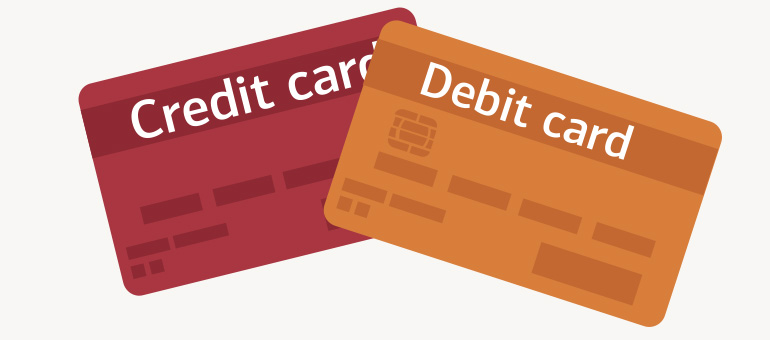Credit and debit cards may look similar, but their features and uses are very different. Knowing when and how to use each can help you build a stronger credit history while keeping your debt levels down.
How do they work?
Credit Card:
- You borrow money from a lending institution and pay back some or all of it each month.
- When your card is used, the credit card company pays the vendor for the purchase.
- You have a limit on how much you can borrow, typically based on your creditworthiness.
Debit Card:
- Money comes directly out of your checking account.
- When your card is used, the funds are transferred from your account.
- You can access only the money available in your account. Using more than your current balance may result in potential fees.
How do they affect your finances?
Credit Card:
- You can make a purchase even if you don’t have available funds at the time of purchase, so it can be easy to go over budget.
- Interest is charged if you don’t pay your balance in full. You may also be charged for making late payments.
- Many cards offer rewards such as frequent flyer miles, cash back or gift cards.
- On-time payments could boost your credit score.
Debit Card:
- Spending limits are even more concrete, which may help you to keep your budget.
- There are no interest charges. But you may be charged fees for withdrawing more than what’s in your account.
- You can often get cash back at points of sale.
- Doesn’t affect your credit history. So use won’t help – or hurt – your credit score.
Security
Credit Card:
- Since funds aren’t withdrawn immediately, you may be protected from fraud or theft. If you misplace your card, you may be able to temporarily lock it via mobile or online banking.
- Most cards have $0 liability protection for fraudulent purchases. You may report the theft/loss in a timely manner to dispute fraudulent charges.
- You may be reimbursed for goods that are damaged in transit.
Debit Card:
- You may be asked to enter a Personal Identification Number (PIN) to authorize purchases. If you misplace your card, you may also be able to temporarily lock it via mobile or online banking.
- $50 maximum if you notify the bank within two days of learning the card is missing. After that, liability may increase to $500. Notice must be given within 60 of your statement being sent to you. After 60 days, the liability is unlimited.*
- If goods are damaged, you likely need to deal with the merchant.
*Source: Federal Trade Commission

